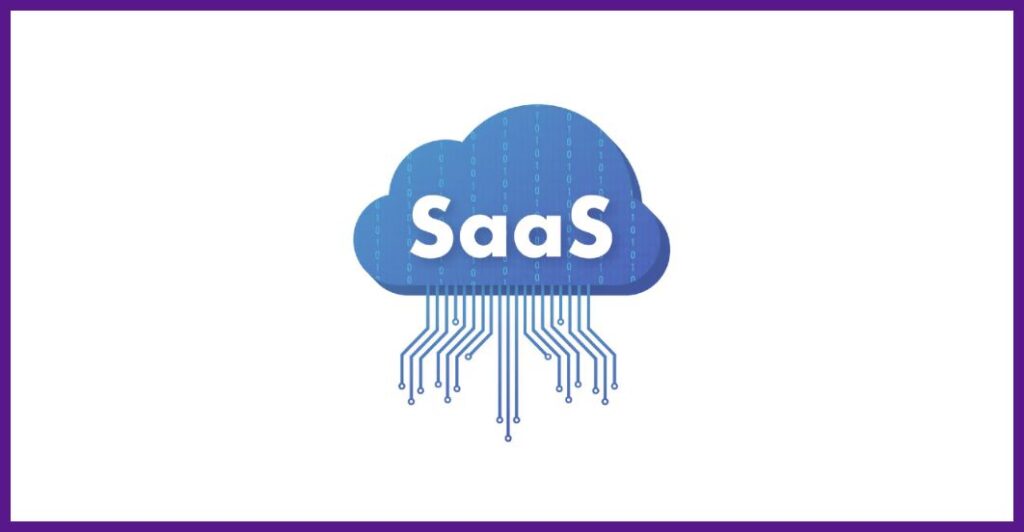The Software as a Service (SaaS) business model has grown significantly in recent years, driven by widely used platforms like Netflix, HubSpot, and DocuSign. With this growth comes the need for effective SaaS management to control costs, ensure visibility, compliance, and operational efficiency.
What is SaaS
Software as a Service (SaaS) is a software distribution model in which a cloud provider hosts applications and makes them available to end users over the Internet. Thus, an independent software vendor may contract with a third-party cloud provider to host the application. Additionally, in the case of larger companies, such as Microsoft, the cloud provider can also be the software vendor.
SaaS is one of the three main categories of cloud computing, along with Infrastructure as a Service (IaaS) and Platform as a Service (PaaS). Thus, it represents a variety of IT professionals, business users, and personal users use SaaS applications.
Why SaaS Management is Essential for the IT Industry
With the advancement of cloud-based solutions, SaaS management is no longer optional. Thus, as companies expand the use of subscription licenses, cost control and application usage monitoring become essential to avoid waste and vulnerabilities.
Managing SaaS efficiently means:
- Have full visibility about all applications used;
- Control expenses and eliminate duplicate or underutilized subscriptions;
- Protect corporate data and ensure compliance with standards such as the LGPD;
- Increase productivity of IT teams and end users.
Companies that manage manually using spreadsheets face serious limitations, especially as the number of applications grows rapidly. That's where SaaS management tools come in, automating data collection. reduce the cost, tracking of licenses and access security.
SaaS Vendor Management as Part of ITAM
IT Asset Management (ITAM) has evolved to include not only physical assets but also digital and cloud assets. With the expansion of SaaS services, vendor control has become a strategic pillar of IT governance.
SaaS vendor management helps companies:
- Centralize contract, payment and software usage data;
- Standardize acquisition and renewal processes;
- Get accurate performance and cost-benefit reports;
- Reduce risks related to shadow IT and lack of compliance.
This type of management ensures that the company only uses the services that are truly necessary, making better use of resources and saving money.
Top SaaS Management Challenges in 2025
- Data compliance and security
With the expansion of remote work and privacy laws, IT compliance became a priority.
Therefore, companies need to ensure that all contracted applications follow strict security, encryption, and sensitive data protection standards.
IT compliance involves not only vetting suppliers, but also meeting legal requirements, periodic audits, and cyber risk management.
- Lack of visibility into the SaaS environment
One of the biggest challenges for technology teams is knowing exactly how many and which applications are being used. After all, without visibility, it becomes difficult to forecast costs, plan capacity, and maintain control over the software lifecycle.
- Access control and user governance
Effective access control is essential to maintaining the security and performance of your SaaS environment. Learn about some best practices for access control:
– Implement Single Sign-On (SSO) to reduce passwords and simplify audits;
– Define access hierarchies based on positions and responsibilities;
– Automate account provisioning and deactivation;
– Monitor the use of privileged permissions.
In this way, these measures reduce human error, increase security and facilitate corporate compliance.
- Digitization and automation of processes
Automating SaaS management is key to scaling operations without increasing costs.
Therefore, modern solutions offer centralized dashboards, usage alerts, and integration with ERPs and security platforms.
How to Start SaaS Management from Scratch
1. Identify those responsible for each software
Bring together representatives from IT, purchasing, and finance to map all applications in use and their owners. This step creates transparency and shared accountability across departments.
2. Prioritize the most impactful applications
Apply the 80/20 principle: Start by analyzing the 20% of applications that represent 80% of costs or usage. Therefore, it's important to focus, initially, on essential software like Slack, Jira, Salesforce, and Office 365, and discover optimization opportunities.
3. Review contracts and plan renewals
Create a calendar of all SaaS license and contract renewals.
After all, using these events as a starting point serves to negotiate discounts, consolidate suppliers, and adopt automation processes.
4. Implement a SaaS management tool
SaaS management tools help you:
- Centralize all information in a single panel;
- Control costs and usage in real time;
- Detect security and compliance risks;
- Increase visibility and operational efficiency.
Therefore, with the right partner, migrating to a SaaS management platform can be quick and generate immediate savings. Mattzero can be a strategic partner for SaaS and cloud management.
Strategic SaaS management for your company
SaaS management is a strategic component for any technology-dependent company.
With it, it is possible to reduce costs, ensure security, maintain compliance and improve operational performance.
Therefore, investing in a structured approach, based on visibility, automation and governance, is the path to a more secure, efficient and future-ready IT environment.
MattZero can be a great ally in SaaS management and drive your company's strategic growth. Schedule a demo with MattZero and discover how to optimize the use of SaaS in your company, saving time, money and resources.





